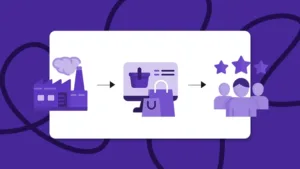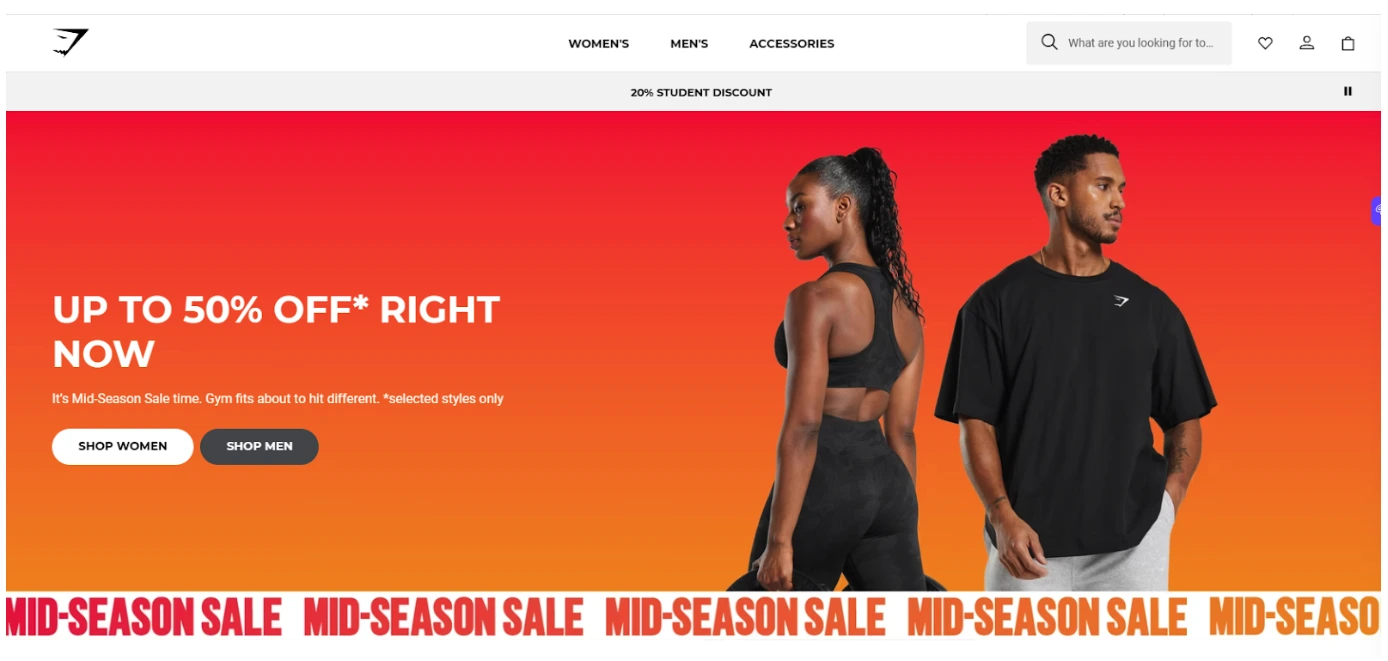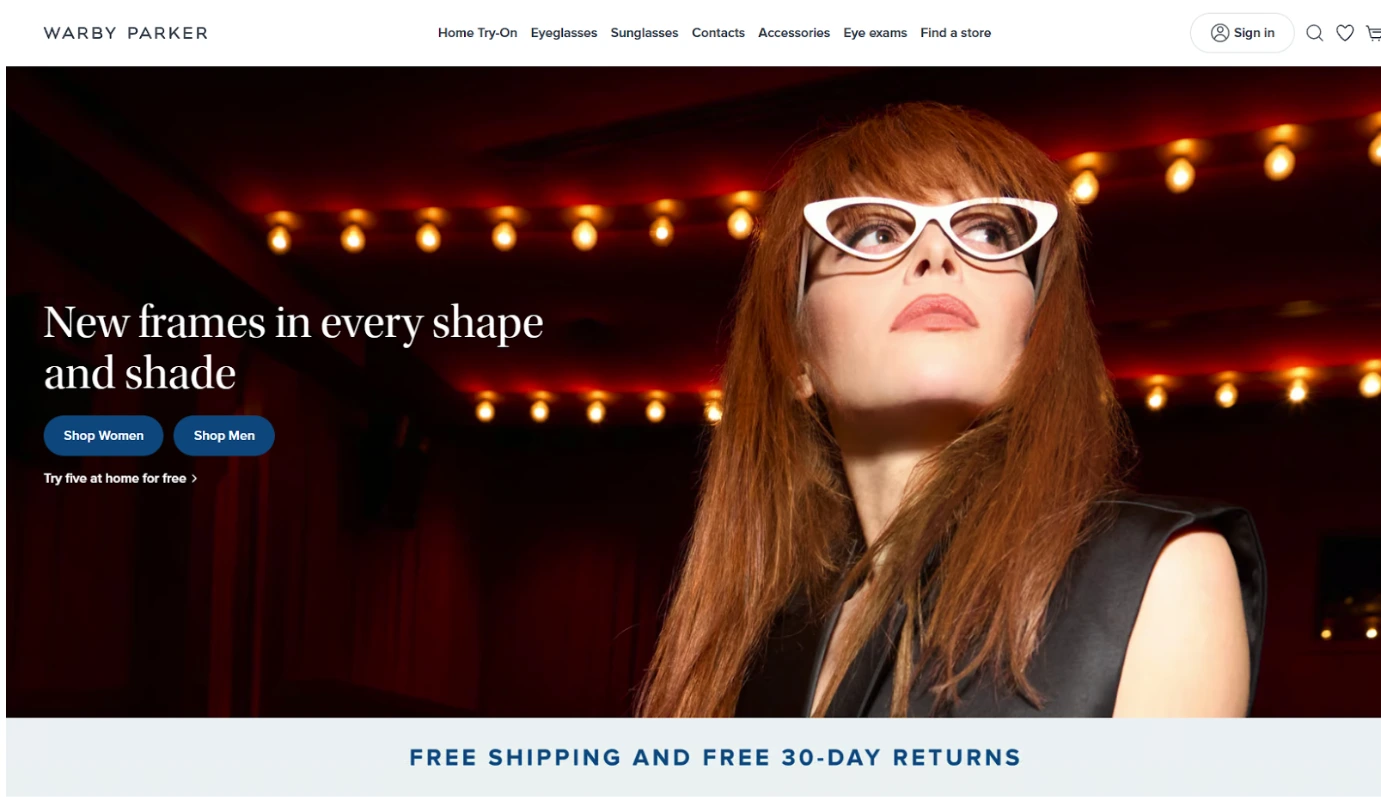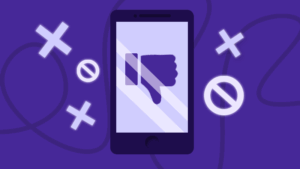How Top D2C Brands Are Using UGC, Influencers, and Community Building to Redefine Customer Relationships
With over 7 years of e-commerce experience, Agne has mastered the balance of creativity and performance. From guiding social media strategies to crafting high-converting ads, she’s all about results.

Direct-to-consumer (D2C) marketing is currently worth more than $134 billion in the U.S. As such, it represents an enormous opportunity for brands. Companies using UGC to sell products directly can cut out the middleman, improve customer service, and boost margins.
D2C marketing began on simple online storefronts (primarily in the ecommerce sector). However, the strategy is now shifting to a more community-driven approach, with user-generated content (UGC) playing a pivotal role.
UGC offers numerous benefits for D2C brands, including enhancing loyalty and helping companies secure stronger customer connections. Shoppers are becoming active participants in the marketing process, helping shape narratives organically and drive growth.
This article explains why brands are embracing the D2C model in more detail. We explore the benefits it offers and pioneers in the space to emulate. Furthermore, we look at how influencer marketing using platforms like Billo can enhance your D2C strategy and help you reach more customers.
Why Brands Are Embracing The D2C Model: Key Benefits And Opportunities
The D2C model is here to stay and may represent the final evolution of marketing. Involving customers, peers, and influencers in the process is a technology-enabled stroke of genius.
Furthermore, the benefits and opportunities D2C offers are tremendous. Here’s why:
D2C improves company agility
D2C’s primary benefit is enhanced agility. Companies can tailor their advertising based on their immediate needs without waiting for the supply chain and middlemen to catch up.
For example, brands using D2C strategies can pivot from one product to another. Launching new products quickly is also an option, without retailers and other entities clogging up the supply chain.
D2C enhances brand control
D2C also gives companies more control over their brands. Firms can separate themselves from their rivals and stand out in crowded marketplaces. D2C lets brands define the boundaries of their customer relationships instead of outsourcing the task to retailers.
Because of this, firms can ensure a more consistent brand experience. D2C prevents intermediate parties from intervening and changing service quality, providing customers with an identical brand tone and voice whenever they interact with the company’s touchpoints.
D2C fosters strong customer relationships
D2C’s ability to foster stronger customer relationships is another benefit. The technique bypasses conventional retailers, providing brands with direct access to customers.
D2C effectively folds customers into the company’s tribe. Clients feel a direct connection with the underlying business instead of having to interact with a department store or ecommerce shop front.
D2C offers better data insights
D2C may also offer more insightful customer preferences and behavior data. Brands using it have greater visibility over sales and don’t have to work with third parties to collect information, allowing them to improve their strategies more seamlessly.
Better data oversight can help with:
- Designing sustainable product roadmaps
- Advertising to specific user groups (i.e. Gen Z)
- Reallocating resources to projects with higher returns
- Benchmarking retailer performance against brand-only channels
- Discovering creators and influencers who can use branded UGC effectively
D2C delivers higher profits
Lastly, eliminating middlemen helps brands maintain their margins. Companies don’t have to finance costly retail units or other outlets to sell their goods. Instead, the D2C supply chain contains only two or three elements. Brands may work with a manufacturer or produce products in-house, then use a shipping carrier (or build their stores) to present products to their audience. Costly retailers don’t play a role. To further streamline operations and improve efficiency, brands can benefit from using supply chain planning software to optimize inventory and fulfillment.
Brands Leading The Way In D2C UGC
Given the benefits of user-generated content and direct-to-consumer marketing, numerous brands have tried to combine them for even greater synergy. Companies that get it right often transform from small firms to multi-billion-dollar enterprises serving millions of people.
Here are some case studies:
Gymshark

Gymshark is an excellent example of the D2C UGC phenomenon in practice. The fitness apparel brand leverages a community-driven approach that uses its audience to sell its lines on social media to millions of people.
The company started in 2012 and reached out to its audience via industry events. Founder Ben Francis used his savings from his pizza delivery job to purchase prime booth locations at sporting trade shows to talk to fans about his gym apparel. From these interactions, he built a strong fan following and sold more than $42,000 of merchandise in one day after gaining publicity.
From the start, Gymshark obsessed over customer relationships, leading to the production of the brand’s first UGC. It launched meet-ups and expos, and went on a world tour in 2016, which it documented in a YouTube series.
Later, the brand turned to ambassadors. It saw influencer marketers as the future of its advertising. If it could show regular people using its products at the gym, that would serve as the social proof it needed.
Before long, Gymshark moved to TikTok, gaining more than 8 billion views for one of its UGC campaigns featuring customers working out and dancing in its clothes. It also launched #Gymshark66, a 66-day challenge for people to “change their lives” by wearing its clothes.
The D2C UGC approach worked because it showcased users benefiting from the company’s branded products. Leads could watch their peers using the company’s sportswear and then imagine themselves benefiting from it as well.
Warby Parker

Warby Parker is another brand that got UGC D2C marketing right. The spectacles company wanted to cut out the middlemen and wholesalers and sell straight to customers for better value.
Warby Parker started with a mobile-led experience. The company created an app that helped people shop and buy glasses online, without annoying browser limitations. The tool meant customers could try frames using augmented reality lenses and get prescriptions through mobile vision assessments.
The result of this was the growth of the Warby Parker online community. Customers loved how the brand had gone the extra mile to serve them, creating a cult community.
Given this success and its social media presence, it became obvious to Warby Parker it should invest more in D2C UGC. It noticed that people who post on social media are over 50% more likely to convert than those who passively consume content.
To facilitate this, the brand set up its “Wearing Warby” campaign. This featured real customers wearing its glasses and giving interviews on its social media channels. It was interesting because it focused on the stories and backgrounds of its clients, going to the source instead of working through influencers or celebrities. The result was a more authentic, genuine experience that customers could relate to. Prospects could listen to the experiences of people with similar characteristics to them.
Away
Away is another company that used D2C UGC worth emulating. But this should come as no surprise: the luggage brand’s founders were members of the fifteen-strong original Warby Parker team, giving them a heads-up on how to use UGC in direct-to-consumer marketing effectively.
Away launched in 2016, generating over $12 million in sales. By 2018, it had already sold over 500,000 suitcases and accessories.
But how did it take the industry by storm? The answer is complicated, but it came down to four things: using D2C, creating a strong narrative for the brand, focusing on community, and elevating the customer experience.
Part of this success was one of Away’s simple UGC campaigns. It asked customers to post images of themselves using its products on Instagram, generating over 4.5 million views across just 325 separate content pieces. Keen travelers saw them using its products and wanted to do the same.
Soon Away saw the benefits of combining UGC with D2C and began scaling its efforts. It invested in building an online community on Instagram, ingraining its audiences with “sharing behavior” to amplify each post’s reach. Now it is one of the most successful suitcase brands globally.
How Influencer Marketing Enhances D2C Strategies
D2C strategies are effective in isolation because of the reasons outlined above. However, brands can also enhance them with influencer marketing. Combining these two approaches is, for many marketers, the last word in brand-building. Here’s why:
- Cost-effective. Using influencers (on platforms like Billo) is cost-effective, reducing the expenses involved in going direct-to-market. Brands can reach out to their audiences for free or at low cost.
- Greater community engagement. Going to audiences directly with corporate messages can generate buzz. However, approaching them with influencers can have a higher impact. Followers are more likely to respond emotionally to UGC than to slick, company messages.
- More traffic and conversions. Higher sales are a likely outcome when using influencer marketing. Prospective customers are more likely to trust their peers (i.e. other customers or content creators) than your brand’s marketing department.
- Greater credibility. Companies using D2C UGC can generate trust faster because the audience is the entity pitching the product, not the brand.
- Authentic endorsements. Finally, influencers can offer brands real, genuine endorsements of their products. Customers can feel confident with these, bypassing the branding of trusted middlemen.
Like Gymshark and Warby Parker, UGC-based D2C marketing expands your company’s reach. You can introduce your concepts and ideas to new audiences in a flash, drawing in thousands of people who wouldn’t see your product otherwise.
Billo simplifies this process by gathering creators into a single platform and allowing you to scale your use of influencers as your business demands. You can work with hundreds of vetted individuals, tap into their audience, and push out new products or services to them. Creators can review, unbox, or share content with their followers, raising awareness and pushing conversions.
Part of Billo’s D2C UGC’s appeal is its cost-effectiveness. Affordable campaigns can often achieve extraordinary results with relatively modest financial input.
Community Building: D2C Marketing’s Secret Ingredient
Ultimately, the core of D2C marketing is community building. Companies that create a tribe around their brand are the most likely to succeed.
Community-building matters because it fosters a deeper relationship with a business’s core, loyal customer base. D2C brands can rely on these individuals to keep the conversation going and maintain their reputation.
This strategy is essential for most D2C firms. Without middlemen, many rely on their audience to create buzz for them.
But how do you build a UGC community as a D2C brand?
1. Learn your audience
The first (and most obvious) step is to learn your audience. Understanding who they are and what makes them tick makes them easier to leverage.
You can discover more about them and their thinking through interviews and surveys. What you learn should determine your brand tone, how you pitch new products, and the authenticity level required for new UGC.
2. Focus on word-of-mouth marketing
The second step is to focus on word-of-mouth marketing. This approach builds stronger, firmer bonds between audience members, and encourages new arrivals to stay.
Influencers are an excellent tool for referral generation because of their social gravitas. Users are liable to trust them and want to be a part of campaigns that include them. Often, brands use these individuals as pillars, supporting the conversation and the rest of the community.
3. Be fun
Next, you want interacting with your brand to be fun. It should be something your audience enjoys doing. The more cult-like you can make your following, the better.
When you focus on fun, it humanizes your company and brings it down to earth. You become more relatable to your audience, and they want to engage with you more. People can get together and enjoy themselves under the auspices of your brand.
4. Encourage UGC
The second-to-last step is to encourage the production of UGC. Home-grown content creators can develop strong communities by getting everyone involved.
Ideally, you should work with creators who resemble your audience. These individuals are better able to generate content that strikes a chord with them. You also want systems in place that let consumers create and share content so they can spread it more widely.
If you can get customers involved in the UGC creation directly, that can sometimes be even better. Coca-Cola’s “Share A Coke” campaign is one of the most successful examples of this of all time.
4. Work with brand allies
The final step is to work with brand allies or complementary brands if available. These allow you to both tap into each other’s audiences and build stronger communities.
Continue learning:
Creative Manager
With over 7 years of e-commerce experience, Agne has mastered the balance of creativity and performance. From guiding social media strategies to crafting high-converting ads, she’s all about results.

Authentic creator videos, powered by real performance data
22,000+ brands use Billo to turn UGC into high-ROAS video ads.
When to Trust Data-Driven Suggestions (and Whe...
Platforms, dashboards, and AI tools now shape nearly every marketing [...]...
Read full articleThe Power of Content Seeding: How to Plant Your ...
Content distribution has shifted — dramatically. Today, 70% of B2B [...]...
Read full article10 Common Digital Marketing Mistakes to Avoid in...
Digital marketing is fast, and what worked years ago might [...]...
Read full article



